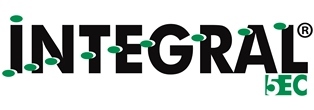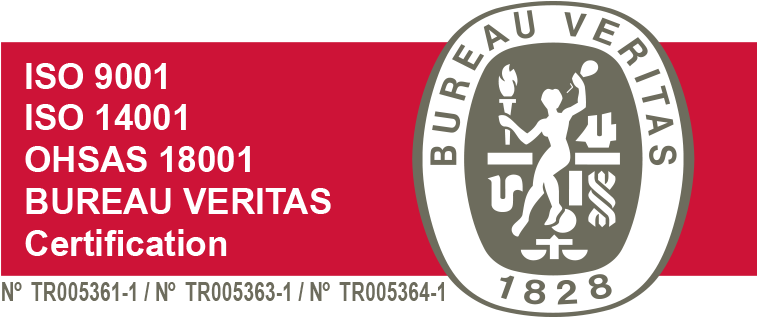Product Certificate and Label
| Name Of The Product | : | INTEGRAL 5 EC |
| Active Substance | : | 50 g/L Lambda-Cyhalothrin |
| Formulation Form | : | Emulsifiable concentrate (SC) |
| Specification | : | Stomach and contact efficient insecticide. This insecticide is a synthetic insecticide with immediate and lasting effect of the group of pyrethroids. |
| Group | : | 3-A INSECTICIDE |
| Toxicity | : | ACUTE MOUTH DOSE FOR RATS : LD50 : 56 mg/kg |
| Environmental Impact | : | Toxic for bees. Toxic for fish. |
Form Of Market Presentation: 0,25 L- 0,5 L – 1 L
MODE OF PREPARATION FOR DRUG APPLICATION:
Fill half of disinfestation device with water. Then fill half of the tank of the equipment with the mixture pre-obtained in a separate bowl. Make the device mixer work like pouring the preparation and complete with water. Pay attention to apply to all the parts of the plant.
MISCIBILITY:
In normal conditions, INTEGRAL can be applied by mixing it with insecticide, fungicide and leaf fertilizers. Before mixing it in big quantities, it is advised to make pre-mixture tests.
MODE OF USE AND TIMING:
This product is efficient by contact and by stomach ingestion in an immediate and sufficient lasting way. In order to have good results with this product, it must be apply in suitable pest stages and in a covering way. For green worm control in cotton, it is recommended to make the disinfestation when most larvae eggs hatch, it means at the first stage of larvae. At this stage, the existent eggs and the green moth eggs to hatch within the following 5 days after the disinfestation with INTEGRAL will not hatch and turn to larvae. For corn borer moth and corn-cob moth control in corn, first disinfestation should be made when first signs of infestation are observed. The other disinfestation interventions should be made every 10-15 days. For codling moth control in apples, first disinfestation should be made when first larvae born. The more effective disinfestation is when larvae are not yet into the fruits. For grape moth control in vineyard, the first disinfestation has to be made when the first larvae are observed at the bud stage. The second application should be made when the grapes are green and the third application when the grapes begin to get sweet. Application of the product should be made in the vineyard on the suckers when sprouts begin to appear for control of agrotis and under the vine stock. For tomatoes, disinfestation must be made when larvae are at the first stages and before they go into the fruit. For cabbage, disinfestation must be made when cabbage moth larvae are at the first stages and it would be beneficial to add 20 ml of spreading glue at 100 lt water. For potatoes, disinfestation must be made against potato beetle at the stages of larvae and adult. For pistachios, the first application of the product must be made when leaf psylla nymphs are seen on the leaves. For hazelnuts, disinfestation will be made when the diameter of the nuts are 3-4 mm large. INTEGRAL can be used with any type of disinfestation devices. Before using it, the device must be thoroughly cleaned and calibrated in order to adjust the dosage of application.
RESISTANCE MANAGEMENT:
INTEGRAL Crop Protection Plant product is an insecticide classed Group 3 A according to its mechanism of action. Repeated applications of the same group of crop protection insecticides lead to resistance development. For this reason, do not exceed the number of recommended applications of INTEGRAL during the same season in order to avoid resistance development. In case applications need to be repeated, pay attention to use crop protection products with a different mechanism of action (apart from those of Group 3 A).
| PLANTS AND PESTS WHERE INTEGRAL 5 E IS USED | |||
| PLANT NAME | PEST NAME | USED DOSAGE AND APPLICATION TIME |
PERIOD OF TIME BETWEEN THE LAST APPLICATION AND THE HARVEST |
| Cotton | * Green moth (Heliothis armlgera) | 150 ml / decare - larvae | 7 days |
| ** Leaf aphi (Aphisgossypiı) | 50 ml / decare | ||
| *** Red spider (Tetranychus urticae) | 50 ml / decare - nymph, adult | ||
| Apple | Codling moth (Cydia pomonella) | 20 ml / 100 L water - larvae 10 ml / 100 L water - larvae |
3 days |
| Webworm (Hyponomeuto spp.) | |||
| Vineyard | Grape moth (Lobesia botrana) | 20 ml / 100 L water - larvae 30 ml / 100 L water - larvae |
7 days |
| Cutworm (Agrotis spp.) | |||
| Corn | Corn hop worm (Sesamla nonagrioides) |
30 ml / decare - larvae 3 applications at an interval of 15 days |
14 days |
| Cutworm (Agrotis spp.) |
50 ml / decare - larvae | ||
| Corn borer moth (Ostrirıia nubilalis) |
30 ml / decare - larvae 3 applications at an interval of 15 days |
||
| Potatoes | Potatoes beetle (Leptinotarsa decemlineata) |
40 ml / decare - larvae and adult | 3 days |
| Beetroot | Tortoise beetle (Cassida spp.) | 25 ml / decare - nymph and adult | 3 days |
| Wheat | Sting bug (Eurygester intsgriceps) |
20 ml / decare at 1st, 3rd, 4th and 5th stages of nymphs |
14 days |
| Cereal wewil (Pachytchius hordei) |
25 ml / decare - adult | ||
| Cereal ground beetle (Zabrus spp.) |
50 ml /decare - larvae | ||
| Tomatoes | Bollworm [Heliothis armlgera) |
50 ml /decare - larvae | 3 days |
| Soybean | Bollworm (Heliothis armlgera) |
150 ml / decare | ______ |
| Cabbage | Cabbage Leaf aphid (Plutella maajliperınis) |
25 ml / decare - larvae | 3 days |
| Pistachio | Leaf psylla (Agonoscena targiorıi) |
20 ml / 100 L water - nymph | 3 days |
| Olives | Olive moth /on flower {Prays oleae) |
15 ml / 100 L water - larvae | 3 days |
| Hazelnut | Hazelnut borer (Balaninus nucum) |
50 ml / decare - adult | 3 days |
* Not to be used in Mediterranean region
** To be used in Aegean and Southeast Anatolian Regions.
*** To be used only in Aegean region.




